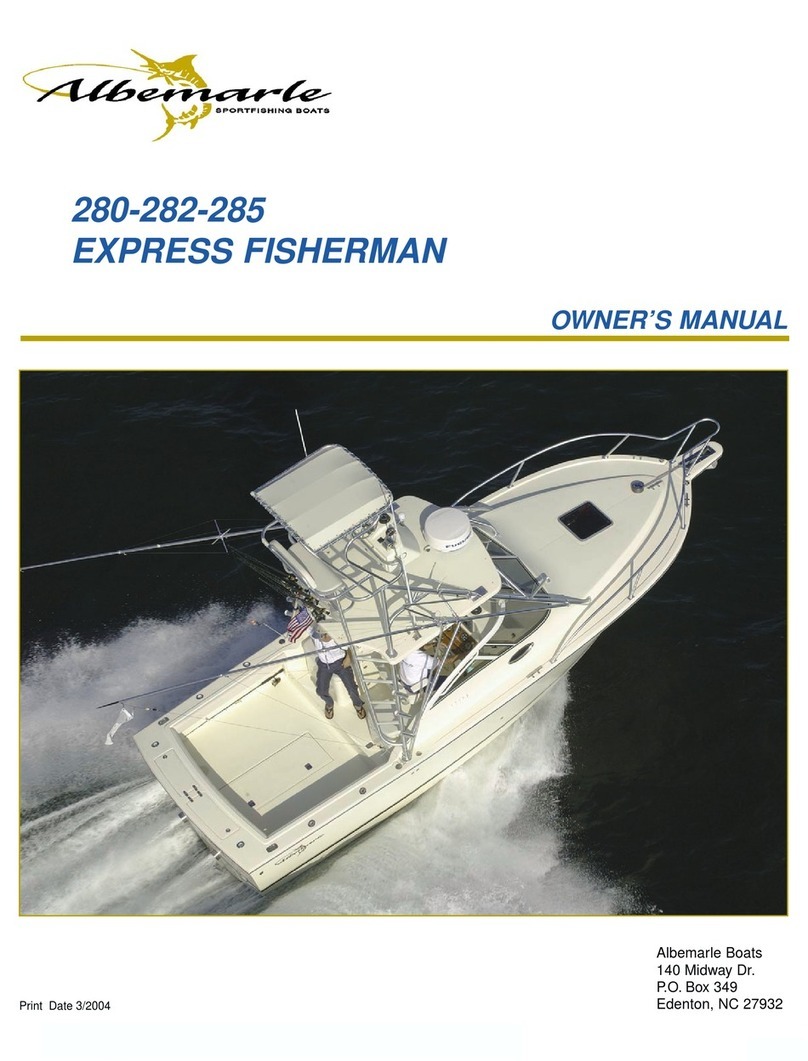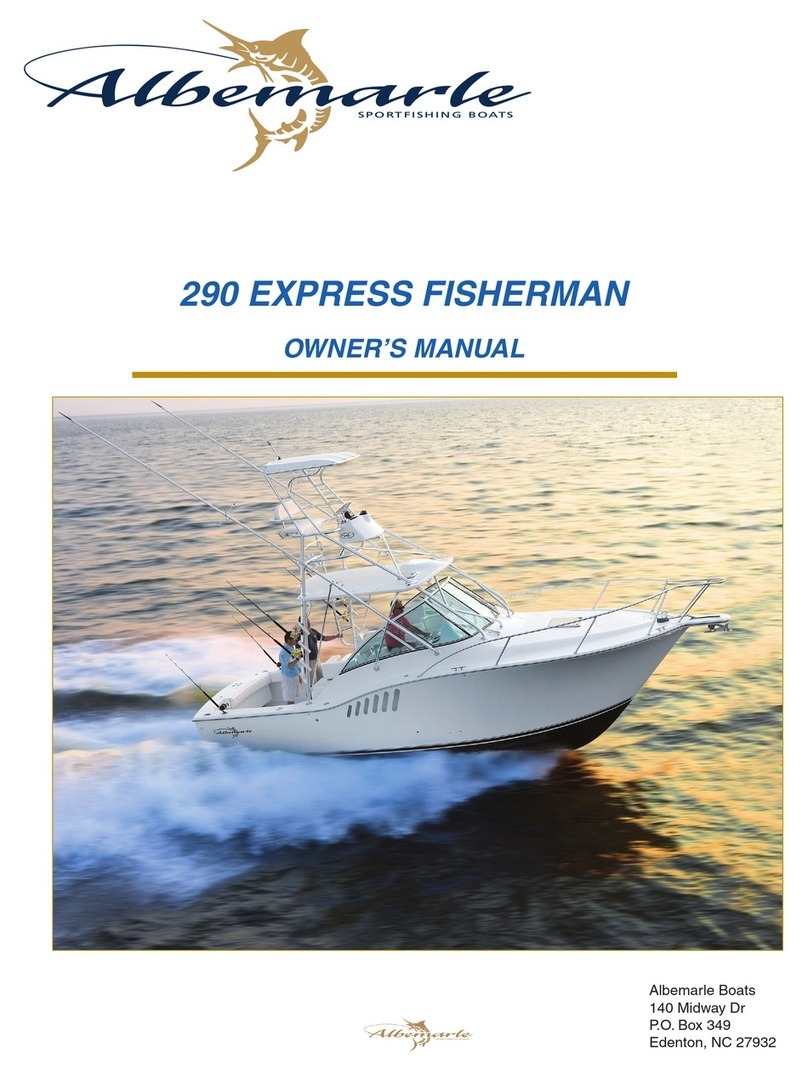
9
410 Convertible
Registration and Numbering
Federal law requires that all undocumented vessels equipped
with propulsion machinery be registered in the State of principal
use. A certificate of number will be issued upon registering
the boat. These numbers must be displayed on your boat. The
owner/operator of a boat must carry a valid certificate of number
whenever the boat is in use. When moved to a new State of
principal use, the certificate is valid for 60 days.
In order to be valid, the numbers must be installed to the
proper specifications. Check with your dealer or state boat-
ing authority for numbering requirements. The Coast Guard
issues the certificate of number in Alaska; all others are issued
by the state.
Insurance
In most States the boat owner is legally responsible for dam-
ages or injuries he or someone else operating the boat causes.
Responsible boaters carry adequate liability and property
damage insurance for their boat. You should also protect the
boat against physical damage and theft. Some States have laws
requiring minimum insurance coverage. Contact your dealer
or State boating authority for information on the insurance
requirements in your boating area.
Reporting Boating accidents
All boating accidents must be reported by the operator or owner
of the boat to the proper marine law enforcement authority for
the state in which the accident occurred. Immediate notifica-
tion is required if a person dies or disappears as a result of a
recreational boating accident.
If a person dies or there are injuries requiring more than first
aid, a formal report must be filed within 48 hours.
A formal report must be made within 10 days for accidents
involving more than $500.00 damage or the complete loss of
a boat.
A Boating Accident Report form is located near the back of
this manual to assist you in reporting an accident. If you need
additional information regarding accident reporting, please call
the Boating Safety Hotline, 800-368-5647.
Education
If you are not an experienced boater, we recommend that the
boat operator and other people that normally accompanies the
operator, enroll in a boating safety course. Organizations such
as the U.S. Power Squadrons, United States Coast Guard Aux-
iliary, State Boating Authorities and the American Red Cross
offer excellent boating educational programs. These courses
are worthwhile even for experienced boaters to sharpen your
skills or bring you up to date on current rules and regulations.
They can also help in providing local navigational information
when moving to a new boating area. Contact your dealer, State
Boating Authority or the Boating Safety Hotline, 800-368-5647
for further information on boating safety courses.
Required Equipment
U.S. Coast Guard regulations require certain equipment on each
boat. The Coast Guard also sets minimum safety standards for
vessels and associated equipment. To meet these standards
some of the equipment must be Coast Guard approved. “Coast
Guard Approved Equipment” has been determined to be in
compliance with USCG specifications and regulations relating
to performance, construction, or materials. The equipment
requirements vary according to the length, type of boat, and
the propulsion system. Some of the Coast Guard equipment
is described in the Safety Equipment chapter of this manual.
For a more detailed description, obtain “Federal Requirements
And Safety Tips For Recreational Boats” by contacting the
Boating Safety Hotline 800-368-5647 or your local marine
dealer or retailer.
Some state and local agencies impose similar equipment re-
quirements on waters that do not fall under Coast Guard juris-
diction. These agencies may also require additional equipment
that is not required by the Coast Guard. Your dealer or local
boating authority can provide you with additional information
for the equipment requirements for your boating area.
OWNER’S / OPERATOR’S INFORMATION






























